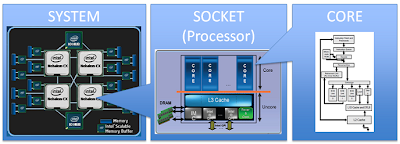Before this week, the name “Ted Williams” most likely brought to mind the phrase “Teddy Ballgame.” Now, the name has become synonymous with “Golden-voiced,” as a homeless man with that moniker has shot to stardom as a result of his breathtaking vocal chords.
Recently, Columbus Dispatch videographer Doral Chenoweth III filmed a brief interview with the Brooklyn-born Williams, who — until recently — panhandled on the corner of a highway.
Yesterday, the video went viral, and has (at the time of this posting) racked up more than 5 million views on YouTube. This ascent is most likely due in no small part to the Reddit community, which took up the cause after Reddit user and Columbus-dweller “shiggiddie” posted the video to the site after hearing about the interview on a local radio show.
“I had already seen the immense good the Reddit community is capable of doing,” shiggiddie says. “I hoped that maybe through the community I might find out who this Ted Williams character is, and how we might be able to help him get on his feet with some work other redditors might want/need for their businesses, etc.”
The results were overwhelming: “I received anywhere from 70 to 80 job offers for Ted in my personal messages alone over the past day and a half, some coming from people claiming to represent the interests of nationwide radio programs, television shows, businesses looking for someone to do their voice systems, ads, ads and more ads, musicians wanting Ted to contribute his voice to their tracks, and even radio hosts wanting him to join their shows as a full-time jockey,” shiggiddie says.
“I haven’t even gotten to the news sources asking me for more information, of which I’d guess I received personal messages from at least 20 to 25.”
The video spread from boards like Reddit to viral culture blogs, leading to appearances on major news outlets — from print to radio to television.
In fact, the awestruck Williams recently appeared on CBS’s The Early Show, where he he tearfully told viewers that he’s on his way back to Brooklyn to reconnect with his 92-year-old mother. From the side of the highway to television to New York — that’s a pretty rapid and drastic progression.
But the trip back to BK isn’t the biggest opportunity that this turn of events has presented for Williams — his lightning-fast ascent to the viral video firmament has also garnered him job offers from the likes of the NFL and the Cleveland Cavaliers (and, by proxy, Quicken Loans). The Cavs also offered him a house.
Quicken Loans President Jay Farner heard about Williams’s great talent last night. “We’re working on a lot of marketing over here at the company, voiceover work, commercials and websites and all kinds of things for Quicken Loans and a variety of our companies who would need that. People heard the voice and thought that might be a great fit. And when I saw that he was in Ohio, I thought that was excellent because the Cavaliers are right there and we’ve got a Quicken Loans web center down there. We’re kind of partial to helping folks in the Midwest.”
Dan Gilbert, the principal owner of Cleveland Cavaliers, is also the founder and chairman of Quicken Loans, so the companies tend to work together rather closely. Still, the job would mostly entail doing voiceovers for the Cavs’s arena.
When asked about the housing offer, Farner replied: “Heck, we’re in the mortgage business, we’re one of the largest lenders in America. Houses are something we know and do pretty well, we figured that it would make sense to find a home for him — a place he could get established, get on his feet. Hard to start a new job if you don’t have a place to call home.”
Williams hasn’t accepted the offer yet, but Farner says that the talented man seems excited by the prospect — and the feeling is mutual.
“When you’re looking for voice talent or someone to go out there and represent your brand, you could do all the focus groups in the world, you’re never going to get 4.5 million people to tell you someone has a great voice,” Farner says. “If 4.5 million people think a voice is great, that’s about the best focus group you could ever get.”











